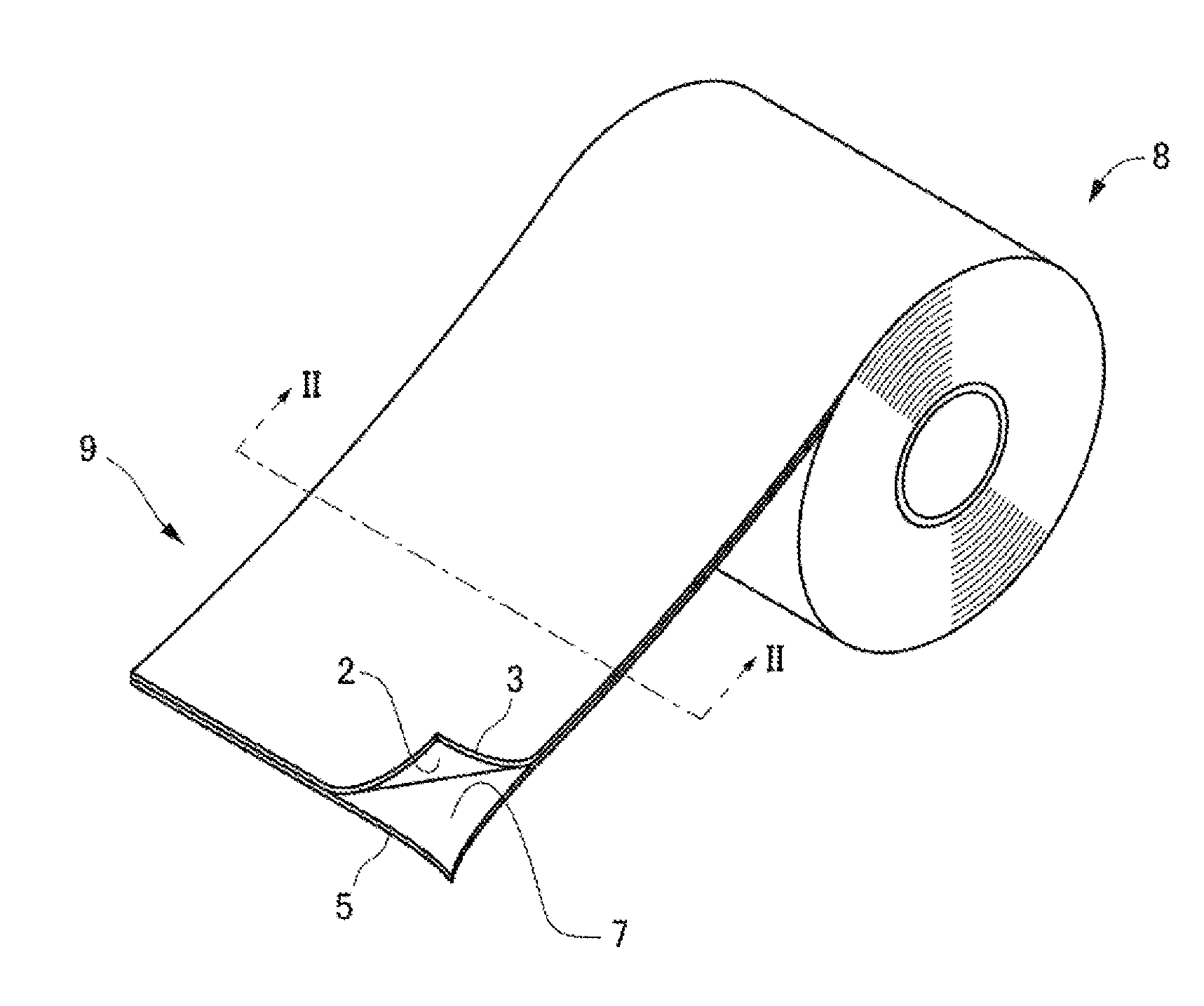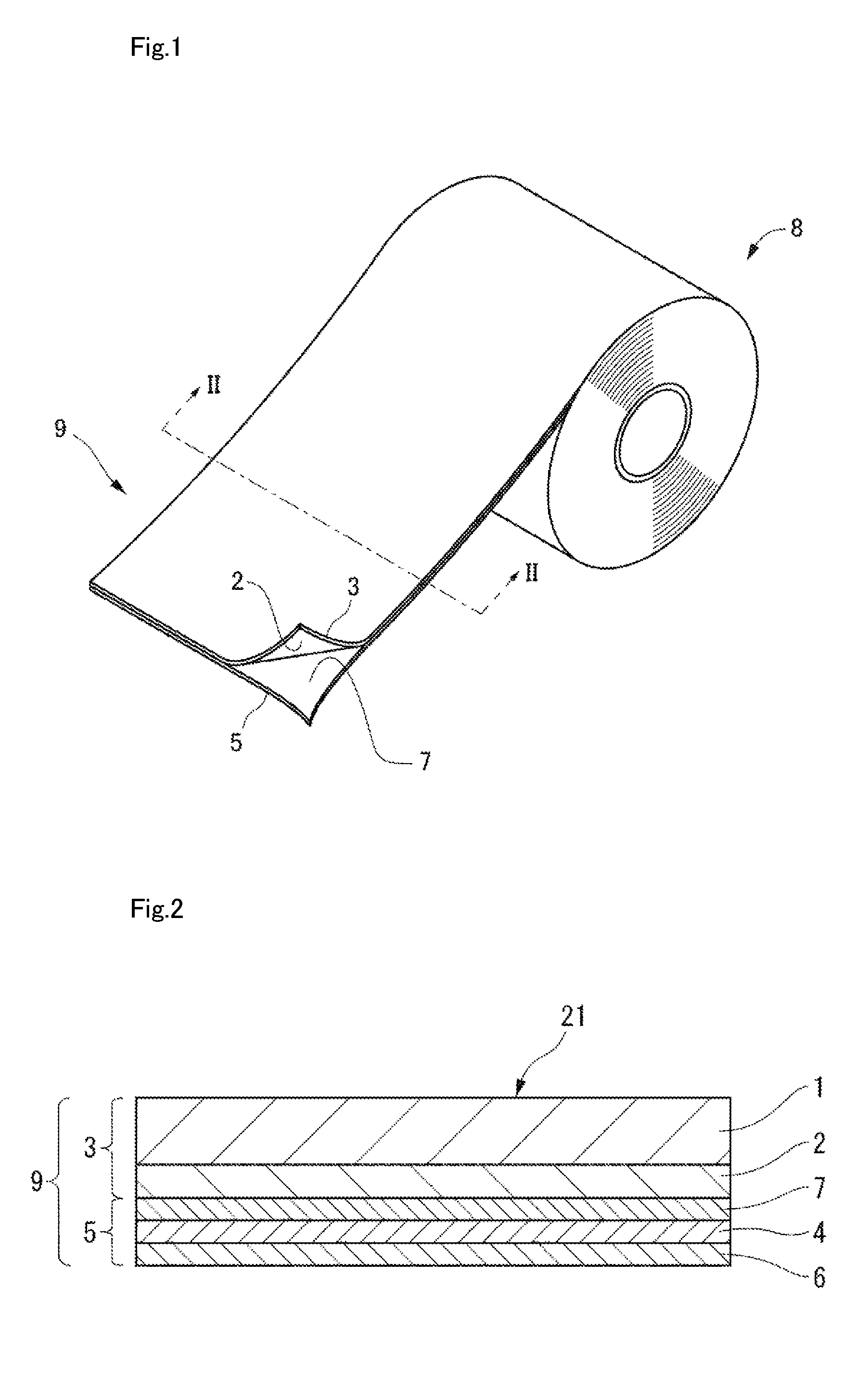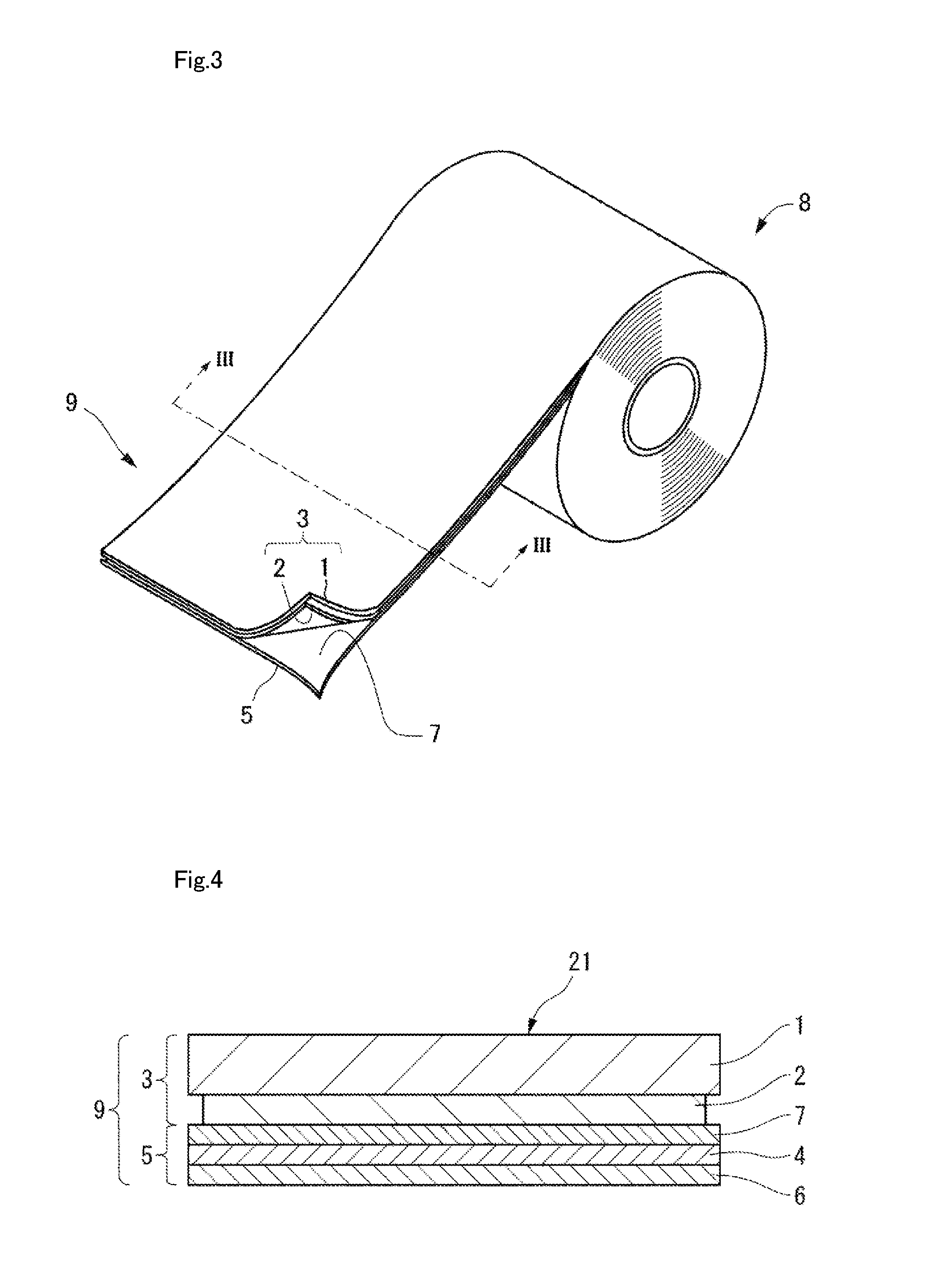Roll-shaped-composite-linerless label
a technology of composite liner and label, applied in the direction of adhesives, identification means, instruments, etc., can solve the problems of limited application as labels, poor peeling effect, and lack of adhesion of roll-shaped composite linerless labels to adherends, etc., to achieve good peeling effect and strong adhesion to adherends
- Summary
- Abstract
- Description
- Claims
- Application Information
AI Technical Summary
Benefits of technology
Problems solved by technology
Method used
Image
Examples
embodiment
[0026]FIG. 1 is a perspective view of a roll-shaped-composite-linerless label according to the present invention. FIG. 2 is a cross-sectional view taken along the line II-II in FIG. 1. It should be noted that, including FIG. 1 and FIG. 2, respective drawing described below are schematic views. For ease of understanding, sizes and shapes of the respective portions are exaggeratedly illustrated as necessary. The following describes with specific values, shapes, materials, or similar specifications; however, these specifications can be appropriately changed.
[0027]A roll-shaped-composite-linerless label 8 in this embodiment is wounded into a roll shape with a linerless label 3 temporarily adhered to a thermal transfer ribbon 5. The roll-shaped-composite-linerless label 8 is formed into a long shape where a base material 1, an adhesive agent layer 2, a back coat agent 7, a film 4, and an ink layer 6 are laminated in this order from upward in FIG. 2. The base material 1 and the adhesive a...
PUM
 Login to View More
Login to View More Abstract
Description
Claims
Application Information
 Login to View More
Login to View More - R&D
- Intellectual Property
- Life Sciences
- Materials
- Tech Scout
- Unparalleled Data Quality
- Higher Quality Content
- 60% Fewer Hallucinations
Browse by: Latest US Patents, China's latest patents, Technical Efficacy Thesaurus, Application Domain, Technology Topic, Popular Technical Reports.
© 2025 PatSnap. All rights reserved.Legal|Privacy policy|Modern Slavery Act Transparency Statement|Sitemap|About US| Contact US: help@patsnap.com



